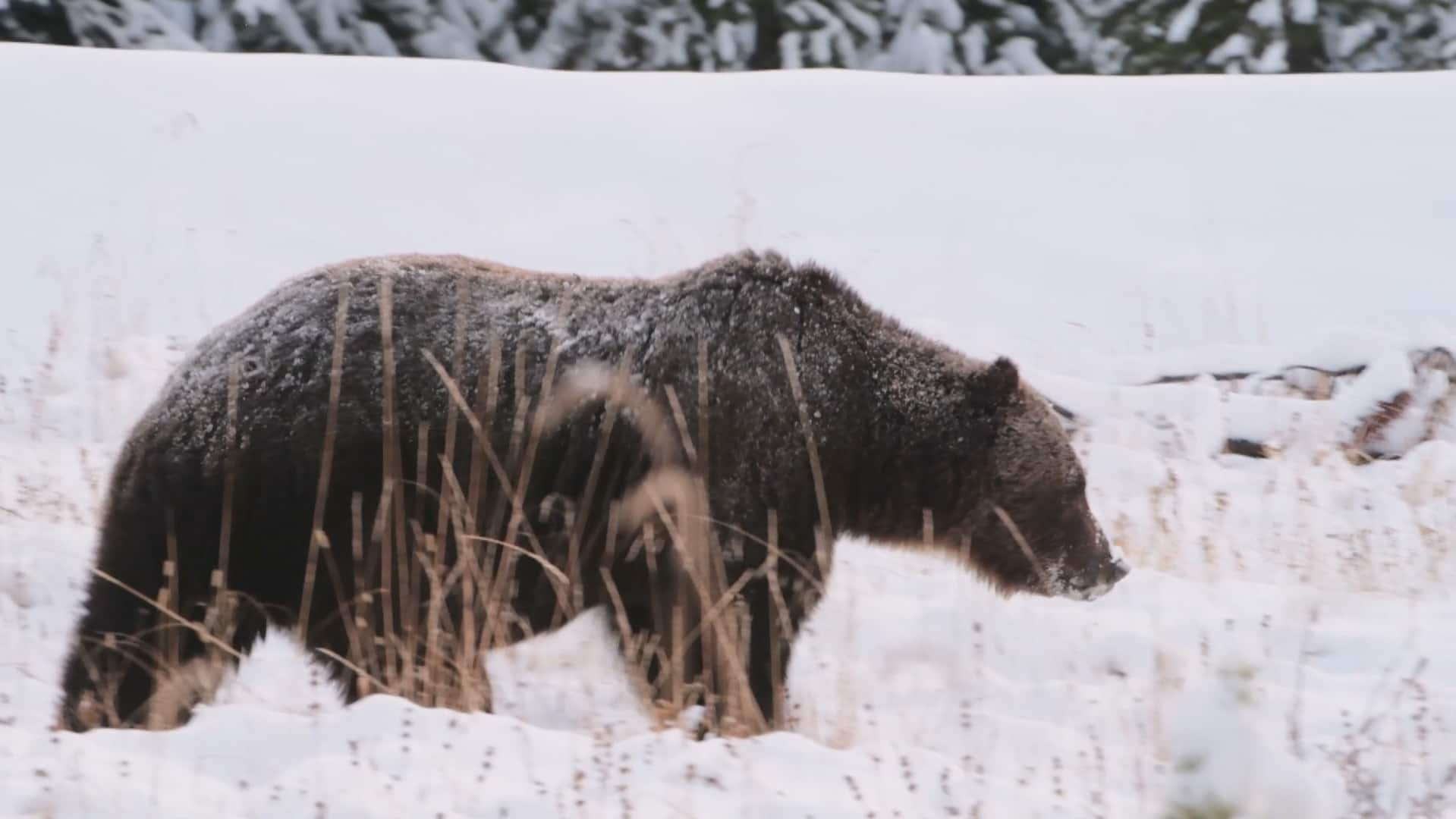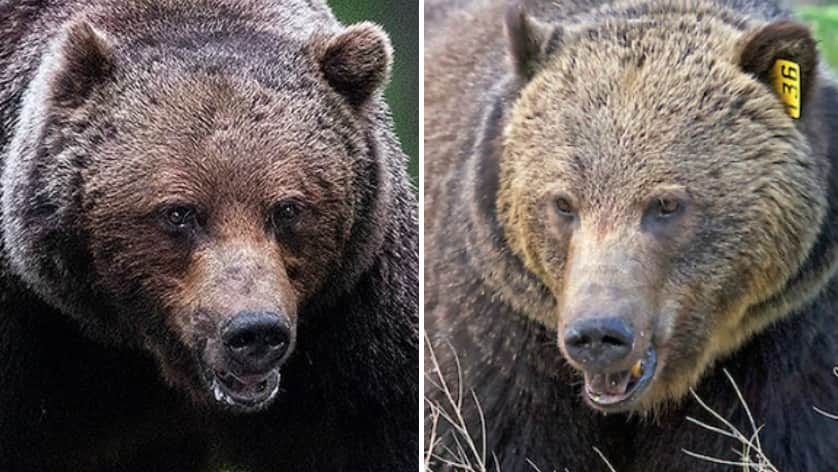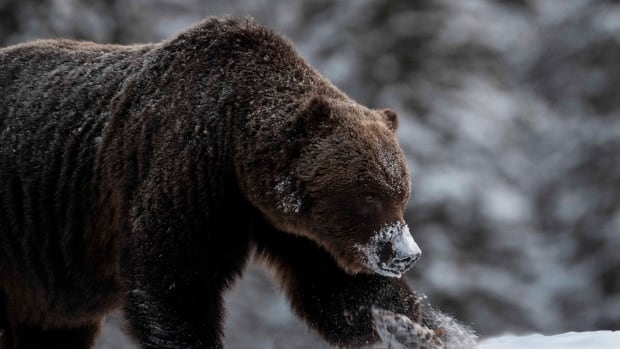
Photographer Jason Leo Bantle was travelling between Banff and Lake Louise on a very snowy morning last weekend, on his way up to the Jasper area, when he happened upon fresh tracks on a roadway.
He got out of his vehicle and followed the tracks backward. Eventually, he found a spot that had been dug out — clearly having served as a large animal’s home for the night.
He got back in his vehicle and started driving toward Lake Louise when something caught his eye.
“I was like, what was that?” he said.
He spotted snow glistening in the distance.
“There was a bear digging underneath a log, with dirt flying behind it. He just popped his head up and I got a couple of shots.”
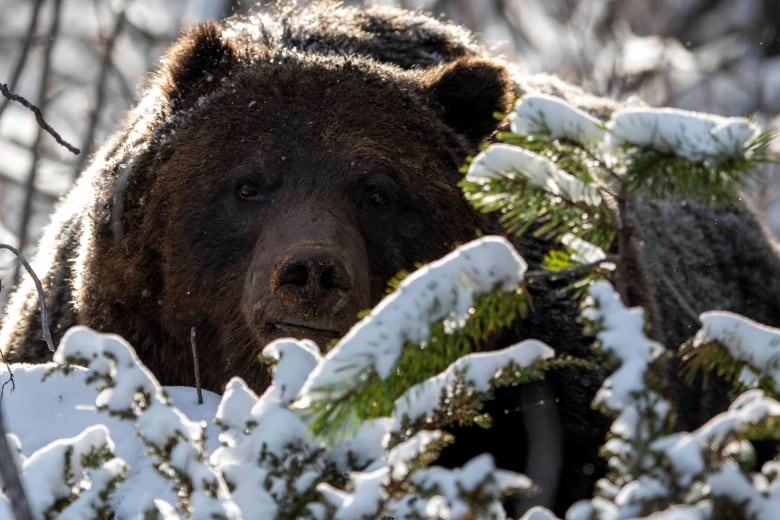
Bantle recognized bear No. 122, otherwise known as The Boss, due to his size and his distinctive ears. The Boss is regarded as being the most dominant grizzly bear found around Banff National Park.
Weighing in at somewhere between 650 and 700 pounds (395-317 kg), the bear’s resume of dominance is legendary. He is considered to have a home range more than 2,500 square kilometres. He’s eaten a black bear. He even once brushed off being struck by a train but still uses the railways for travel and foraging.
Bantle decided he wouldn’t make it to Jasper in time, so he decided to sit in an area with his 960-millimetre lens in tow, hoping The Boss might later arrive.
Sure enough, the massive bear walked through the meadow around sunset.
“It was surreal,” said Bantle, who is based in the Bow Valley. “He is such a beautiful bear.”
WATCH | Jason Leo Bantle documents The Boss as he traverses through snow:
Photographer Jason Bantle captured this video of the notorious Bear No. 122, otherwise known as The Boss, making his way through snow.
A formidable animal
Carolyn Campbell, conservation director with the Alberta Wilderness Association, said photos like those gathered by Bantle remind Albertans of the need to conserve the habitat of the grizzly bear.
“What a privilege that we can see photos of such a magnificent grizzly bear. He’s just a big old male bear with such a life history,” Campbell said.
“It’s wonderful that he’s been able to live this long, and that we have professional photographers that can help us learn and love these bears around us.”
Campbell said Albertans should be respectful of habitats, keeping a respectful distance and not being careless with food so as to reduce potential conflict with bears.
“There’s some indications in some parts of the province that bear populations are stable or growing, but in other areas, it’s far from clear,” she said. “The more that there are people out there, that’s a potential for conflict, which is what we really want to avoid.”
In 2020, Canmore-based photographer John E. Marriott captured a different side of The Boss. This time, he was locked in a battle with a rival, infamous male bear No. 136, nicknamed “Split Lip” for his disfigured mouth. Split Lip has been caught eating other bears on multiple occasions.
Their epic showdown was captured by Marriott, who dubbed it the “battle of the titans.”
WATCH | Photographer John E. Marriott caught a battle between The Boss and Split Lip:
It’s a wildlife photographer’s dream to see a showdown between two of Banff’s most notorious grizzlies (from a safe distance, of course!).
Fighting for dominance is a part of life for the biggest grizzlies in the Canadian Rockies.
“There’s going to be conflict between males,” said David Laskin, a Parks Canada wildlife coexistence specialist in the Lake Louise, Yoho and Kootenay field unit.
He said the huge ranges of the dominant males often overlap, and this leads to scuffles like those between The Boss and Split Lip as they vie for territory.
While the battles leave the competing grizzlies bloodied and scarred, they tend not to cause serious, lasting injuries.
Being a boss
Dominant male grizzlies are distinguished by their access to prime foraging areas and priority mating opportunities. The Boss, in particular, is no stranger to female bears in the Bow Valley.
“We have some DNA results that show [The Boss] has sired the majority of the cubs in our Bow Valley, Banff, population,” Laskin said.
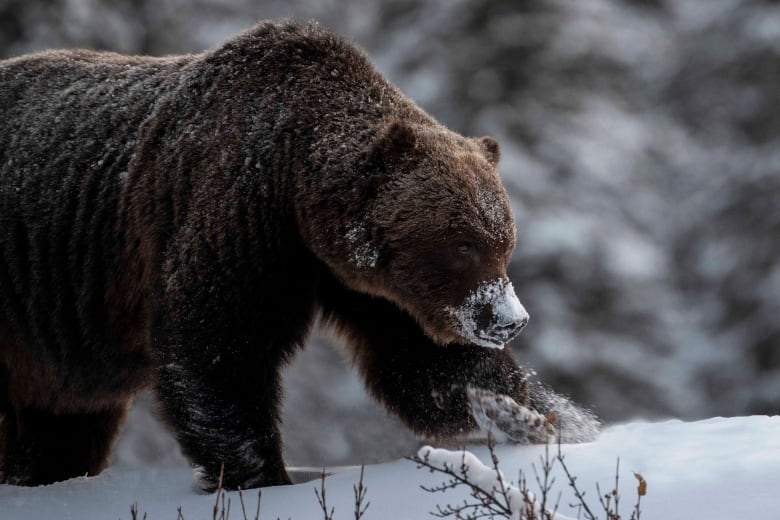
In the wild, the lifespan of a male grizzly is between 20 and 25 years. However, Laskin says several factors contribute to a bear’s lifespan, such as the amount of resources available and stress-free foraging.
This time of year is when bears are at their biggest because they’ve put on weight for the months ahead of hibernation.
Most female bears go into hibernate between October and mid-November, while the biggest males will continue to forage as long as food is available, perhaps even into January.
Laskin said the recent snowfall and days of unseasonable cold might have led more male grizzlies to seek their dens. Even so, visitors to Banff in winter are advised to still be mindful of bears.
“Regardless of the time of year, when you’re in the park, all visitors should always expect to encounter wildlife, including bears,” Laskin said.
